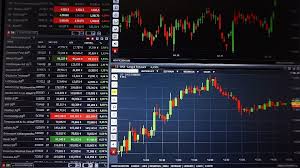Mastering the Forex Currency Market Trading Strategies and Insights 1724055422
noviembre 2, 2025Mastering the Forex Currency Market Trading: Strategies and Insights
Welcome to the world of forex currency market trading, where opportunities abound for savvy traders willing to navigate its complexities. In this comprehensive article, we will delve into key strategies, important concepts, and tips for success while also discussing how to find reliable forex currency market trading MT5 Forex Brokers. Whether you’re a novice or an experienced trader, understanding the nuances of the forex market is crucial for maximizing your potential returns.
Understanding the Forex Market
The forex market, or foreign exchange market, is the largest financial market in the world, with a daily trading volume exceeding $6 trillion. Unlike stock markets, forex operates 24 hours a day, five days a week, across various global financial centers, including London, New York, Tokyo, and Sydney. Traders in the forex market buy and sell currency pairs, which makes it essential to understand how these pairs move against one another.
Currency Pairs
In forex trading, currencies are traded in pairs. A currency pair consists of a base currency and a quote currency. For example, in the pair EUR/USD, the euro is the base currency, and the U.S. dollar is the quote currency. When you buy this pair, you’re essentially betting that the euro will strengthen against the dollar. Conversely, selling the EUR/USD means you believe the euro will weaken against the dollar.
Major, Minor, and Exotic Pairs
Currency pairs are classified into three categories: major, minor, and exotic pairs. Major pairs include the most traded currencies such as EUR/USD, GBP/USD, and USD/JPY. Minor pairs involve currencies that are less frequently traded, such as AUD/NZD or EUR/GBP. Exotic pairs, on the other hand, pair a major currency with a currency from a developing economy, such as USD/TRY (Turkish lira) or EUR/SEK (Swedish krona).
Trading Strategies
To navigate the forex market effectively, developing a trading strategy is crucial. Here are a few popular strategies employed by traders around the world:
1. Day Trading
Day trading involves opening and closing trades within the same trading day. This strategy is characterized by quick decision-making and the ability to analyze market trends in real-time. Day traders typically rely on technical analysis and often use charting tools to identify short-term price movements.
2. Swing Trading
Unlike day trading, swing trading focuses on holding positions for several days or weeks. Swing traders seek to capture larger price movements and often use a combination of technical and fundamental analysis. This strategy allows traders to take advantage of price «swings» in the market.
3. Scalping
Scalping is a high-frequency trading style that aims to profit from small price fluctuations. Scalpers place numerous trades throughout the day, holding each position for just a few seconds to minutes. Given its rapid pace, this strategy requires significant focus and quick execution.
Risk Management
Effective risk management is a vital component of forex trading. With the potential for high rewards comes the risk of significant losses. Here are some key risk management practices:
1. Use Stop-Loss Orders
Stop-loss orders automatically close a trade when a currency pair reaches a specified price, helping to minimize potential losses. Setting these orders ensures that traders do not expose their accounts to excessive risk.
2. Diversify Your Portfolio
Diversification involves trading multiple currency pairs rather than focusing on a single pair. This strategy helps to spread risk across different assets and can reduce the impact of adverse movements in any one currency pair.
3. Risk-Reward Ratio
Investors should calculate a reasonable risk-reward ratio before entering a trade. A commonly used ratio is 1:2, meaning that for every dollar risked, the potential reward is two dollars.
The Role of Technical Analysis
Technical analysis is a crucial aspect of forex trading. It involves analyzing price charts and patterns to predict future price movements. Key elements of technical analysis include:
1. Support and Resistance Levels
Support levels indicate a price point where demand is strong enough to overcome selling pressure, while resistance levels show where selling interest exceeds buying demand. Understanding these levels can help traders identify key entry and exit points.

2. Indicators and Oscillators
Traders often use various indicators and oscillators to analyze market trends. Popular tools include the Moving Average, Relative Strength Index (RSI), and MACD (Moving Average Convergence Divergence). These tools help traders gauge market momentum and make informed decisions.
The Impact of Economic Indicators
Economic indicators such as GDP growth, employment rates, and inflation play a significant role in forex trading. Traders should pay attention to key economic releases and announcements, as they can cause substantial volatility in currency pairs. Major reports include Non-Farm Payrolls, Consumer Price Index (CPI), and Central Bank Meetings.
Understanding Market Sentiment
Market sentiment refers to the overall attitude of traders toward a particular currency or the market as a whole. This sentiment can be bullish (optimistic) or bearish (pessimistic) and can significantly influence price movements. Tools like sentiment indicators and news analysis can help traders gauge prevailing market sentiment.
Choosing the Right Broker
Selecting a reliable forex broker is vital for successful trading. Traders should consider factors such as:
1. Regulation
Choose a broker that is regulated by financial authorities to ensure the safety of your funds and fair trading practices.
2. Trading Platform
The trading platform should be user-friendly and equipped with essential tools and features. Popular platforms include MetaTrader 4 (MT4) and MetaTrader 5 (MT5), which are widely used among forex traders.
3. Spreads and Fees
Compare the spreads and fees charged by brokers to determine the overall cost of trading. Low spreads can increase your profitability, so it’s essential to choose a broker that offers competitive pricing.
Conclusion
The forex market is a dynamic and exciting environment for traders looking to capitalize on currency fluctuations. By understanding the mechanics of trading, employing sound strategies, and effectively managing risk, traders can enhance their chances of success. Whether you are just starting or a seasoned pro, continuous learning and adaptation to market changes are key to your long-term success in the forex currency market trading.
